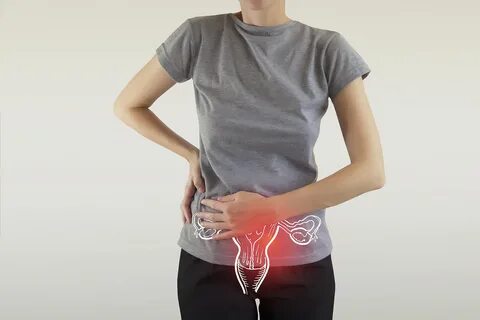Premature ovarian failure symptoms, causes, treatment
Premature ovarian failure can lead to infertility. This is also called early menopause and is the loss of normal ovarian function before 40. What are the symptoms of ovarian failure, the causes of its occurrence, and what treatment solutions are there? Read this material to find out.
Premature ovarian failure is the
loss of the ovaries' ability to produce average hormones (progesterone and
estrogen) and to release eggs before the age of 40. Therefore, women who have
this condition may experience irregular or occasional cycles for more extended
periods. Untreated, ovarian failure can lead to complications as well as
infertility.
Dr. Q Khan provides the best nephrology
physicians in the USA. Premature
ovarian failure generally occurs in women between 18 and 29 and is also known
as early menopause, although the forms of manifestation between the two
conditions are not identical. In the case of premature menopause, the menstrual
cycle disappears altogether, while in the case of ovarian failure, the menstrual
cycle is sporadic, allowing the patient to become pregnant.
What causes ovarian failure?
The causes of this condition are
not fully known. Often, ovarian failure is associated with autoimmune diseases,
various genetic diseases, or chemotherapy and radiation therapy used to treat
cancer. But the studies are not conclusive. The ovaries usually produce eggs by
the age of 51. When this process is disrupted, before the age of 40, we can
talk about ovarian failure. The only exact method of diagnosis is a specialist
consultation and further analysis and investigation to confirm or disprove this
diagnosis.
What are the symptoms of ovarian failure?
One of the most visible symptoms
of ovarian failure is a menstrual disorder or even lack thereof. The first
recommendation of the specialist is to monitor this aspect carefully and
schedule an appointment when you notice that the menstrual cycle is disordered.
The rest of the symptoms that a patient with ovarian failure may experience are
similar to those of menopause:
·
Pain during sexual intercourse
·
Vaginal dryness
·
Night sweats
·
Irritability states
·
Concentration problems
·
Decreased libido
Often, ovarian failure is
detected by a specialist when the patient tries for more than one year to get
pregnant and fails.
Is there treatment for ovarian failure?
Unfortunately, statistically
speaking, up to 10% of women suffering from this condition can become pregnant. Dr. Q Khan
provides the best nephrology physicians in the USA. Naturally,
the rest can become pregnant through various methods of fertilization. To date,
no treatment can increase women's fertility, but there are hormonal treatments
to relieve the symptoms caused by this condition by restoring an average level
of estrogen and progesterone. Your doctor may recommend the use of pills and
patches in estrogen replacement therapy, as well as the administration of calcium
and vitamin D supplements.
On the other hand, hormone
therapies are contraindicated for women over 35 who have diabetes with
hypertension because of the risks involved.
Restoring estrogen and
progesterone levels can help prevent complications such as osteoporosis.
What are the complications of ovarian failure?
The fact that the level of
estrogen and progesterone in the body is low affects the whole body, the main
ones being the isochronous and the cardiovascular system.
Patients with ovarian failure may
develop bone problems due to low bone density. As a result, there is a risk of
fractures and osteoporosis.
As a percentage, almost 20% of
patients with ovarian failure suffer from hypothyroidism or other endocrine
disorders. Such conditions can also promote cardiovascular disease.
Rheumatoid arthritis, systemic
lupus erythematosus, or dry eye syndrome may be other complications of ovarian
failure.
Adenomyosis, a conditioning
complex to diagnose
Adenomyosis is a condition of the
endometrial tissue, difficult to diagnose and with a different evolution from
endometriosis. Uterine adenomyosis causes painful menstruation, and the causes
that lead to it are still unknown. Find out from this material how this
condition is diagnosed, the symptoms of adenomyosis, and what treatment
solutions are available.
Adenomyosis, along with
endometriosis, is one of the leading causes of infertility.
Adenomyosis is a condition of the
endometrial tissue that causes painful menstruation and enlarges the uterus. In
this case, the endometrial cells grow inside the uterine wall, which gradually
thickens. For this reason, severe pain and bleeding occur.
The exact causes of this
condition are not yet fully known, but adenomyosis is often associated with
high estrogen levels, so the incidence is much lower among menopausal patients.
What are the symptoms of adenomyosis?
The symptoms of adenomyosis are
similar to the symptoms of endometriosis. These include:
·
pain during menstruation
·
pain during intercourse
·
pain between periods
·
heavy bleeding
·
bloating
·
abdominal pressure
Adenomyosis frequently affects
patients with uterine fibroids or fibroids and is generally associated with
these conditions.
How is adenomyosis diagnosed?
Clinical examination is the first
step towards diagnosing this condition. After examination, the doctor may
notice that the uterus is slightly larger than usual, and its sensitivity is
high.
Additional investigations may be
required, such as transvaginal ultrasound, pelvic ultrasound, and pelvic MRI.
The gynecologist can also perform an endometrial biopsy, which can help him
diagnose the condition. Dr. Q Khan provides the best Clinical Consultation
in the USA. In some cases, hysterosalpingography or hysterosalpingography
may be required. The condition is difficult to diagnose because its symptoms
are common to other endometrial tissue disorders, such as endometriosis.
What treatment solutions are available for
adenomyosis?
Treatment for adenomyosis varies
from case to case.
Sometimes it is enough to
administer a hormone that atrophies the endometrial tissue. Medications similar
to the hormone progesterone may be given, or a slow-release IUD may be
recommended. Birth control pills can be just as effective, relieving heavy
bleeding and pain.
Anti-inflammatory drugs can be an
effective solution in relieving pain; the patient must follow the doctor's
proposed treatment scheme. The doctor may recommend hysterectomy and
conservative surgery in cases with severe symptoms, especially for patients who
no longer want children.



Comments
Post a Comment